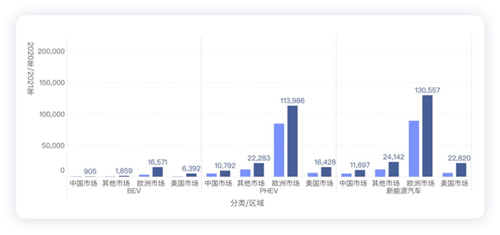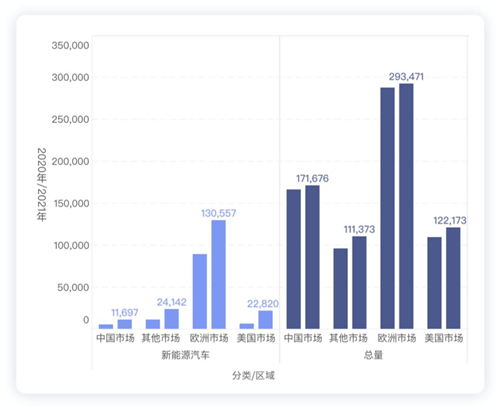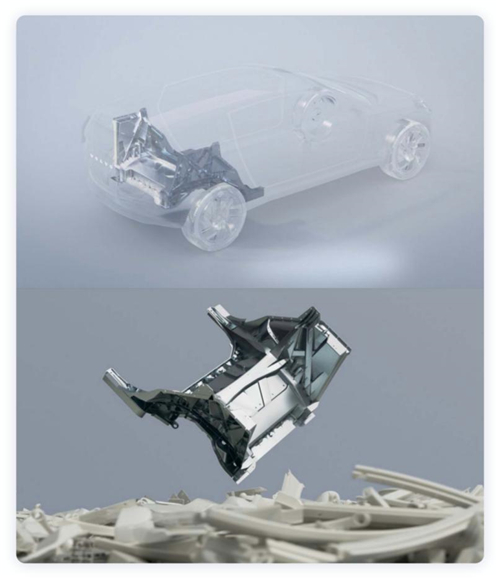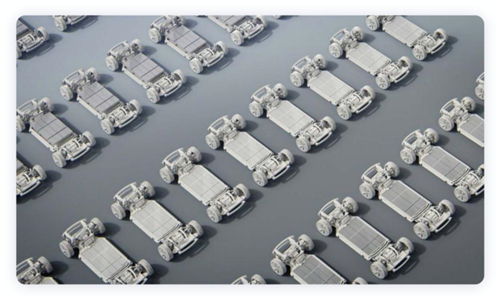Volvo Introduces Integrated Casting and CTC Technology
Volvo is going to introduce the technology for electric vehicles and invest 10 billion SEK in the next few years to prepare for manufacturing the next generation of pure electric vehicles. Volvo is the first to stand up for the next generation of pure electric models with longer cruising range, faster charging speeds and lower costs.
Torslanda is going to introduce a series of new, more sustainable technologies and manufacturing processes followed Tesla's lead in transforming the entire plant, including an aluminum alloy one-piece casting process, a new battery assembly plant and a final assembly shop. The integrated casting provides the car with many advantages such as sustainability, costs and performance during the life cycle. Introducing the aluminum alloy integrated casting process is the most critical part of the entire investment plan.

Figure 1 Volvo's global facility layout
Torslanda Plant was put into use by the King of Sweden in 1964, which is the largest single plant in Sweden and can manufacture 300,000 cars every year. It is one of the manufacturing plants with the longest operation. It can be said that the Torslanda plant can afford the production capacity of electric vehicles in the entire European after the transformation.
Volvo's electrification process
Volvo's global car sales are 698,693 sets, and there are also many new energy vehicles, with a total of 189,216 sets sold worldwide (a year-on-year increase of 64%), accounting for 27.1% of the total sales. This ratio is already quite high for traditional auto companies.
Of course, the problem is also obvious. Volvo's vehicles are limited to plug-in hybrids and they are sold only in Europe.

Figure 2 The overview of Volvo's global new energy vehicle market in 2021
At present, sales growth can't be maintained for Volvo by only focusing on plug-in hybrids. Looking forward to the future, we must find a way to sell pure electric vehicles in the global market. It is more necessary to consider how to obtain better profits for pure electric vehicles like Tesla.

Figure 3 Volvo's global situation
Volvo wants to transform Torslanda into a production base for a new generation of pure electric vehicles by investing 10 billion SEK to make the next generation of electric vehicles more competitive. A series of new and more sustainable technologies and manufacturing are introduced, including an aluminum alloy integrated casting process, a new battery assembly plant, and a fully refurbished painting and final assembly shop.
Introducing aluminum alloy integrated casting processes for pure electric models is the most critical part of the investment in the entire factory. One-piece casting provides many benefits in terms of sustainability, costs and performance in the life cycle of the car. Weights can be reduced by integrally casting the main components of the car structure into a single aluminum part, so that energy consumption can be reduced, the performance of the vehicle and continuation of the journey can be improved. The cabin and luggage space can be better designed, which can improve the overall versatility of the car. The complexity of the manufacturing process is also reduced, which saves costs and logistics, and reduces the impact of the manufacturing process and supply chain on the environment.

Figure 4 Volvo completely crossing the river by feeling the stones just like Tesla in 2020
The new battery assembly plant will introduce the process of square shell CTC after operating with Northvolt in battery cell production. The battery cells will be integrated into the floor structure of the car. The best thing about CTC is that it can improve the whole vehicle's efficiency, make the unity of design and manufacturing of pure electric vehicles come true.

Figure 5 Shell-based CTC and current CTP
Torslanda is going to introduce a series of new, more sustainable technologies and manufacturing processes followed Tesla's lead in transforming the entire plant, including an aluminum alloy one-piece casting process, a new battery assembly plant and a final assembly shop. The integrated casting provides the car with many advantages such as sustainability, costs and performance during the life cycle. Introducing the aluminum alloy integrated casting process is the most critical part of the entire investment plan.

Figure 1 Volvo's global facility layout
Torslanda Plant was put into use by the King of Sweden in 1964, which is the largest single plant in Sweden and can manufacture 300,000 cars every year. It is one of the manufacturing plants with the longest operation. It can be said that the Torslanda plant can afford the production capacity of electric vehicles in the entire European after the transformation.
Volvo's electrification process
Volvo's global car sales are 698,693 sets, and there are also many new energy vehicles, with a total of 189,216 sets sold worldwide (a year-on-year increase of 64%), accounting for 27.1% of the total sales. This ratio is already quite high for traditional auto companies.
Of course, the problem is also obvious. Volvo's vehicles are limited to plug-in hybrids and they are sold only in Europe.

Figure 2 The overview of Volvo's global new energy vehicle market in 2021
At present, sales growth can't be maintained for Volvo by only focusing on plug-in hybrids. Looking forward to the future, we must find a way to sell pure electric vehicles in the global market. It is more necessary to consider how to obtain better profits for pure electric vehicles like Tesla.

Figure 3 Volvo's global situation
Volvo wants to transform Torslanda into a production base for a new generation of pure electric vehicles by investing 10 billion SEK to make the next generation of electric vehicles more competitive. A series of new and more sustainable technologies and manufacturing are introduced, including an aluminum alloy integrated casting process, a new battery assembly plant, and a fully refurbished painting and final assembly shop.
Introducing aluminum alloy integrated casting processes for pure electric models is the most critical part of the investment in the entire factory. One-piece casting provides many benefits in terms of sustainability, costs and performance in the life cycle of the car. Weights can be reduced by integrally casting the main components of the car structure into a single aluminum part, so that energy consumption can be reduced, the performance of the vehicle and continuation of the journey can be improved. The cabin and luggage space can be better designed, which can improve the overall versatility of the car. The complexity of the manufacturing process is also reduced, which saves costs and logistics, and reduces the impact of the manufacturing process and supply chain on the environment.

Figure 4 Volvo completely crossing the river by feeling the stones just like Tesla in 2020
The new battery assembly plant will introduce the process of square shell CTC after operating with Northvolt in battery cell production. The battery cells will be integrated into the floor structure of the car. The best thing about CTC is that it can improve the whole vehicle's efficiency, make the unity of design and manufacturing of pure electric vehicles come true.

Figure 5 Shell-based CTC and current CTP
Related News
- Impact of Heat Treatment on Mechanical Properties and Thermal Conductivity of ZL102 Alloy
- Impact of T6 Heat Treatment on ADC12 Aluminum Alloy Properties
- Enhancing the Mechanical Properties of ADC12 Aluminum Alloy via T6 Heat Treatment
- Die-Casting Process Design of Valve Bodies for Automobile Oil Cylinder Parts
- Temperature Field Simulation & Optimization of Automotive Housing Die Castings
- Research Status of High-Impact Aluminum Alloys Domestically and Internationally
- Die-cast Aluminum Castings for High-speed Rail Rocker Arm Shells
- Aluminum Alloys for Automobile Body Panels
- Analysis and Measures of Internal Shrinkage Cavities in Aluminum Die Castings
- Advantages of Aluminum Alloys in Lightweight Automobiles


